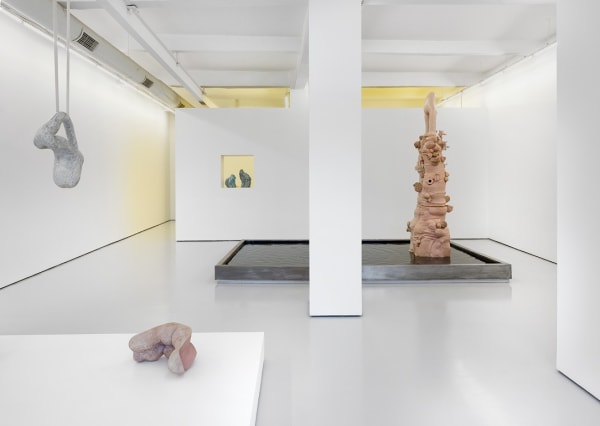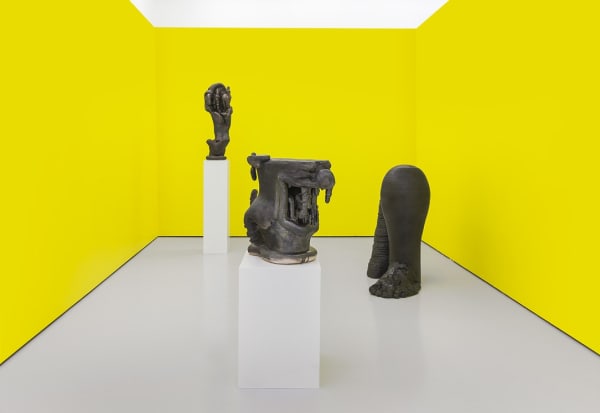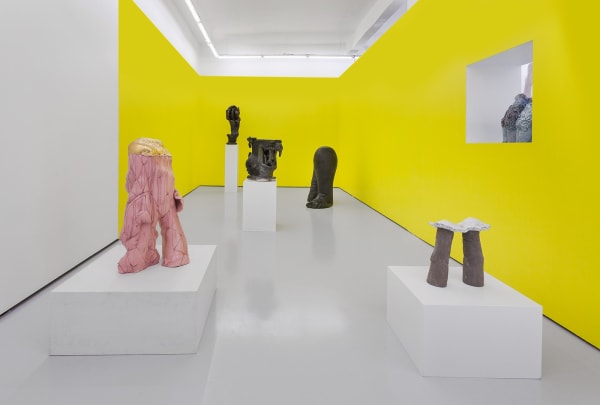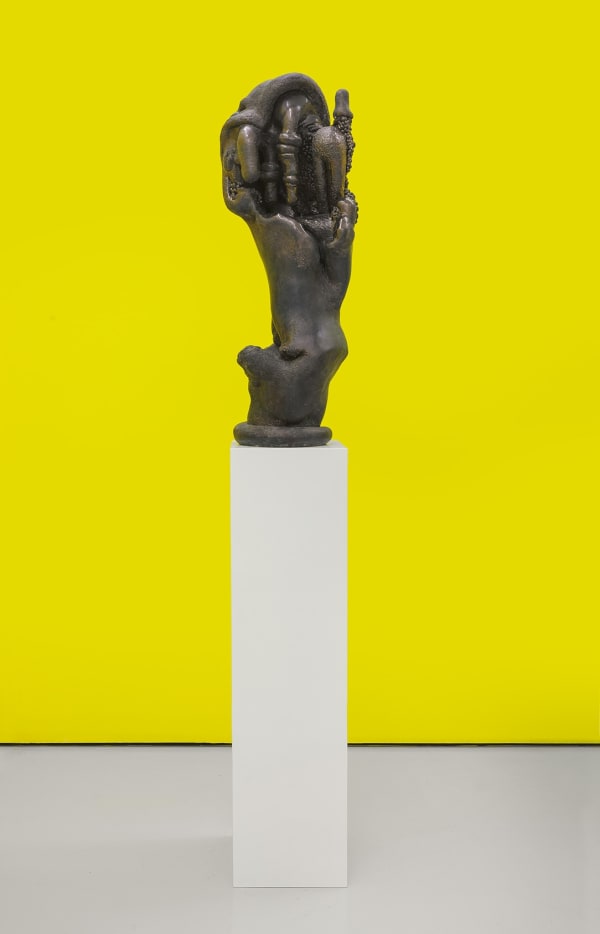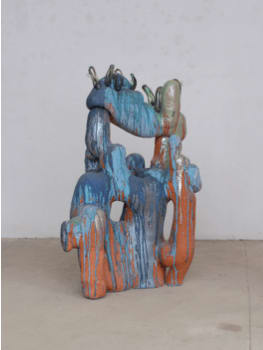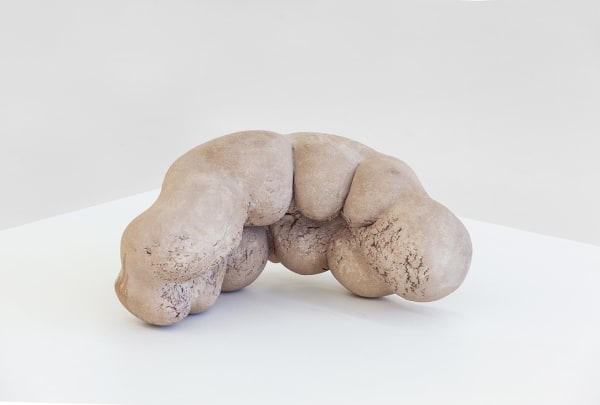Soft Is The New Strong: Elsa Sahal
“These stones [...] at once begin to lose their hardness
and their rigidity; slowly they soften; once softened,
they begin to take on shapes. Then presently, when
they’d increased in size and grown more merciful in
character, they bore a certain incomplete resemblance
to the human form, much like these images created by a
sculptor when he begins roughly modeling his marble
figures.”
Ovid, Metamorphoses, W.W. Norton & Co, New York, 2005, Book I.Quoted by Valérie Da Costa in Elsa Sahal, Les Éditions Particules / Fondation d’entreprise Ricard, Paris, 2008.
Soft is the new Strong gathers a body of works from Elsa Sahal's earlier to the most recent works, a series of uninhibited sculptures, which navigate between figuration and abstraction, hard and soft materials, public art and performance. Over the course of more than a decade, ceramicist Elsa Sahal has conceived a universe whose diverse biomorphic population is rife with contradictions, both visual and conceptual. Improbably, her clay creations manage to be simultaneously abstract and representational, adorable and abject, graceful and gawky, childish and erotic, masculine and feminine, and pathetic and powerful.
If not always openly figural, Sahal’s sculptures are insistently and explicitly corporeal. Typically headless, her representations of acrobats, clowns, hikers or dancers exhibit toned muscles and humid skins while striking impossible contorted poses. From nascent works made in the early 2000’s, just after graduating from the École Nationale Supérieure des Beaux-Arts de Paris where she studied with Georges Jeanclos and Erik Dietman, to her most recent sculptures, Sahal’s studies of unnamable, unspeakable bodies continue to scandalize, surprise, and seduce.
For Elsa Sahal, the history of sculpture is “the expression of an expansive virility and a relationship to power.” She represents this paradigm of the masculine with humor, as a softened form, which a woman sculptor rectifies and cooks, without ever really managing to make stand upright. However, it is with assurance and delight that she uprights and monumentalizes the feminine: the large piddling child (Fontaine) which she installed in a public space on the occasion of the FIAC, in 2012, is in her words a manifesto. La Pisseuse, object of an aging Picasso’s desire, has become the subject for a young woman artist and she turns it into a heroic character: “Young girls, you can urinate standing up like the men,” she tells the young women of her time. From the painting to the public space, from the object of masculine desire to the manifestation of feminine power, from the modern grotesque to the contemporary laugh, one perceives the completely singular questioning of gender in Sahal’s work. And not content merely to interrogate, she has worked unceasingly to construct a feminine gaze on gender, sex, and desire. In this way she effects a profound renewal of a history of forms that had only been constructed from the point of view of male artists: of the desiring and devouring gaze of an omnipresent male, by way of the first surrealist sexual explorations, followed by the “war between the genders” declared by feminisms, up to our century when, with the establishment of the concept of equality, the feminine gaze now can devour the masculine just as the latter had the former; the feminine can now be powerful, even devastating.
In Sahal’s work, the masculine is a pathetic past, the feminine a troubled future, but she places the woman at the center of our present: her body turns the public space into a heroic one, makes the masculine body bend, and plays with her/their desires.
-
 Elsa Sahal, Oeufs au plat (Eggs on fingers)
Elsa Sahal, Oeufs au plat (Eggs on fingers) -
 Elsa Sahal, Pied (Foot), 2005
Elsa Sahal, Pied (Foot), 2005 -
 Elsa Sahal, Autoportrait en forme de grotte n°1 (Self-portrait as a cave n°1), 2005
Elsa Sahal, Autoportrait en forme de grotte n°1 (Self-portrait as a cave n°1), 2005 -
 Elsa Sahal, Autoportrait en forme de grotte n°3, (Self-portrait as a cave n°3), 2005
Elsa Sahal, Autoportrait en forme de grotte n°3, (Self-portrait as a cave n°3), 2005 -
 Elsa Sahal, Leda Louisiana, 2014
Elsa Sahal, Leda Louisiana, 2014 -
 Elsa Sahal, Mains aux ongles rouges, 2020
Elsa Sahal, Mains aux ongles rouges, 2020 -
 Elsa Sahal, Alchemist's Daughter n°2, 2018
Elsa Sahal, Alchemist's Daughter n°2, 2018 -
 Elsa Sahal, Arlequin n°2, 2009
Elsa Sahal, Arlequin n°2, 2009 -
 Elsa Sahal, Composition abstraite, 2001
Elsa Sahal, Composition abstraite, 2001 -
 Elsa Sahal, Nichonesque 2, 2020
Elsa Sahal, Nichonesque 2, 2020
